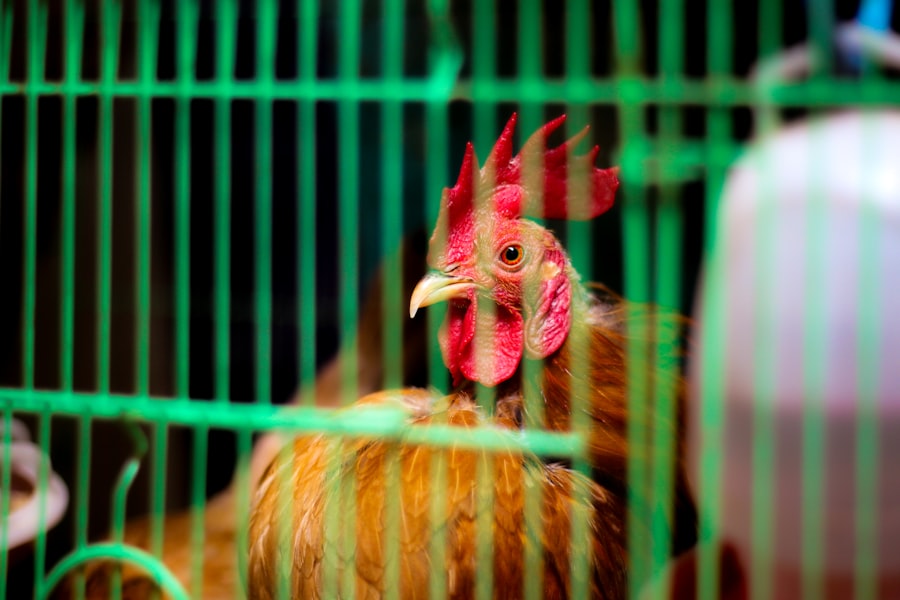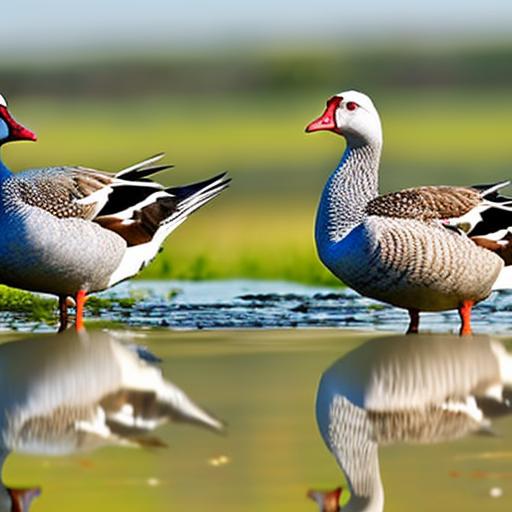Raising chickens presents both rewards and challenges, with water-related risks being a significant concern. Chickens require constant access to clean, fresh water, which increases the likelihood of spills, leaks, and other water-related hazards in and around the coop. Chicken owners must be aware of these risks and implement preventive measures to ensure the safety of their flock.
Water in the chicken coop also poses a risk of bacterial growth and contamination. Stagnant water can become a breeding ground for harmful microorganisms, potentially endangering both chickens and humans. Understanding this risk is essential for chicken owners, as it can significantly impact flock health and well-being.
To mitigate these risks, chicken owners should provide appropriate watering solutions, implement safety measures, maintain clean coop conditions, and regularly monitor their flock. By taking these precautions, owners can create a safer environment for their chickens and reduce the likelihood of water-related accidents and health issues.
Table of Contents
- 1 Providing Proper Watering Solutions
- 2 Implementing Safety Measures
- 3 Maintaining Clean and Safe Coop Conditions
- 4 Monitoring and Supervising
- 5 Training and Conditioning
- 6 Seeking Professional Help
- 7 FAQs
- 7.1 What are the common causes of chickens drowning?
- 7.2 How can I prevent chickens from drowning in ponds?
- 7.3 What measures can I take to keep chickens safe around water buckets and troughs?
- 7.4 Are there any specific breeds of chickens that are better swimmers and less prone to drowning?
- 7.5 What should I do if I find a chicken in danger of drowning?
Key Takeaways
- Understanding the risk: Recognize the potential dangers and health risks associated with poultry farming, including waterborne diseases and contamination.
- Providing proper watering solutions: Ensure access to clean and uncontaminated water sources for the poultry, and consider using automatic watering systems to minimize the risk of contamination.
- Implementing safety measures: Install barriers and fencing to prevent access to unsafe areas, and regularly inspect and maintain equipment to reduce the risk of accidents.
- Maintaining clean and safe coop conditions: Regularly clean and disinfect the coop, and properly dispose of waste to minimize the risk of disease and contamination.
- Monitoring and supervising: Regularly observe the poultry for signs of illness or distress, and promptly address any issues to prevent the spread of disease.
- Training and conditioning: Educate yourself and your staff on proper poultry care and handling, and implement regular training and conditioning exercises to ensure safe and efficient practices.
- Seeking professional help: Consult with veterinarians and other poultry experts to address any health or safety concerns, and seek professional guidance for implementing best practices in poultry farming.
Providing Proper Watering Solutions
Minimizing Risks with Nipple Waterers
To mitigate the risks associated with water in the chicken coop, it’s essential to provide proper watering solutions for your flock. One of the most effective ways to do this is by using nipple waterers or automatic waterers. These systems are designed to provide a constant supply of clean and fresh water to your chickens while minimizing the risk of spills and leaks.
Benefits of Nipple Waterers
Nipple waterers are especially beneficial as they prevent chickens from contaminating the water with dirt, feces, or bedding material, reducing the risk of bacterial growth and contamination.
Maintenance is Key
In addition to using nipple waterers, it’s important to regularly clean and maintain the watering system to ensure that the water remains clean and free from contaminants. This may involve regularly flushing the system, scrubbing the waterers, and replacing any worn or damaged parts.
By providing proper watering solutions and maintaining a clean water supply, chicken owners can significantly reduce the risk of water-related accidents and bacterial contamination in the coop.
Implementing Safety Measures
In addition to providing proper watering solutions, it’s crucial to implement safety measures to minimize the risk of water-related accidents in the chicken coop. This may involve installing non-slip flooring in the coop and surrounding areas to prevent slips and falls, especially during wet weather. It’s also important to ensure that any water sources in the coop are securely fastened and cannot be easily knocked over by curious chickens or other animals.
Another important safety measure is to regularly inspect the watering system for any signs of wear or damage and promptly repair or replace any faulty components. Additionally, it’s essential to keep electrical components such as heaters or water pumps away from water sources to prevent the risk of electric shock or fire hazards. By implementing these safety measures, chicken owners can create a safer environment for their flock and reduce the risk of water-related accidents in the coop.
Maintaining Clean and Safe Coop Conditions
Maintaining clean and safe coop conditions is essential for minimizing the risk of water-related accidents and bacterial contamination in the chicken coop. This may involve regularly cleaning and disinfecting the coop, including the watering system, to prevent the buildup of harmful bacteria. It’s also important to ensure that bedding material is kept dry and clean to prevent moisture-related issues such as mold growth or ammonia buildup.
In addition to regular cleaning, it’s important to provide adequate ventilation in the coop to prevent humidity levels from becoming too high, which can contribute to bacterial growth and respiratory issues in chickens. Proper drainage around the coop can also help prevent water from pooling around the structure, reducing the risk of flooding or moisture-related damage. By maintaining clean and safe coop conditions, chicken owners can create a healthier environment for their flock and reduce the risk of water-related hazards.
Monitoring and Supervising
Monitoring and supervising your flock is crucial for identifying and addressing any potential water-related hazards in the chicken coop. This may involve regularly checking the watering system for leaks or malfunctions, as well as observing your chickens for any signs of illness or distress that may be related to water quality or availability. It’s also important to monitor the surrounding areas for any signs of flooding or standing water that could pose a risk to your flock.
Supervising your chickens during feeding and watering times can also help prevent accidents and ensure that all birds have access to clean and fresh water. By closely monitoring your flock and their environment, you can quickly identify and address any potential issues before they escalate into more significant problems.
Training and Conditioning

Teaching Waterer Etiquette
By teaching your flock to use nipple waterers or automatic waterers from a young age, you can minimize the risk of spills and contamination associated with traditional water containers.
Conditioning for Safety
Conditioning your chickens to recognize and respond to potential hazards, such as standing water or wet surfaces, can also help prevent accidents and keep your flock safe.
Enrichment for a Safer Environment
Additionally, providing enrichment activities such as dust baths or access to outdoor areas can help keep your chickens active and engaged, reducing the likelihood of them engaging in risky behaviors around water sources. By training and conditioning your flock, you can help create a safer environment for your chickens and reduce the risk of water-related accidents in the coop.
Seeking Professional Help
Finally, if you encounter any significant issues or concerns related to water in the chicken coop, it’s essential to seek professional help. This may involve consulting with a veterinarian or poultry expert if you suspect that your flock has been exposed to contaminated water or is showing signs of illness related to water quality. Additionally, if you encounter any structural issues such as flooding or drainage problems around the coop, it may be necessary to consult with a professional contractor or landscaper to address these issues effectively.
Seeking professional help when needed can help ensure that any potential risks or hazards related to water in the chicken coop are promptly addressed, minimizing the impact on your flock’s health and well-being. Professional guidance can also provide valuable insights and recommendations for preventing future issues related to water in the coop, helping you create a safer and healthier environment for your chickens. In conclusion, understanding the risks associated with water in the chicken coop is crucial for ensuring the safety and well-being of your flock.
By providing proper watering solutions, implementing safety measures, maintaining clean and safe coop conditions, monitoring and supervising your flock, training and conditioning your chickens, and seeking professional help when needed, you can minimize the risk of water-related accidents and bacterial contamination in the coop. With proactive measures in place, you can create a safer environment for your chickens and enjoy all the benefits of raising a healthy and happy flock.
If you’re looking for more tips on keeping your chickens safe and healthy, you might want to check out this article on how to insulate a chicken coop. Insulating your coop can help protect your chickens from extreme temperatures and keep them comfortable year-round.
FAQs
What are the common causes of chickens drowning?
Chickens can drown in water sources such as ponds, buckets, or troughs if they are not able to easily access the water or if the water is too deep for them to safely navigate.
How can I prevent chickens from drowning in ponds?
To prevent chickens from drowning in ponds, you can install a ramp or shallow ledge to allow them to easily enter and exit the water. Additionally, you can fence off the pond to restrict their access.
What measures can I take to keep chickens safe around water buckets and troughs?
To keep chickens safe around water buckets and troughs, you can use shallow containers or add rocks or bricks to make it easier for them to access the water without the risk of drowning.
Are there any specific breeds of chickens that are better swimmers and less prone to drowning?
There are no specific breeds of chickens that are known for being better swimmers. All chickens are at risk of drowning if they are unable to safely navigate water sources.
What should I do if I find a chicken in danger of drowning?
If you find a chicken in danger of drowning, carefully and gently remove them from the water source and ensure they are warm and dry. Monitor them for any signs of distress or illness and seek veterinary care if necessary.
Meet Walter, the feathered-friend fanatic of Florida! Nestled in the sunshine state, Walter struts through life with his feathered companions, clucking his way to happiness. With a coop that’s fancier than a five-star hotel, he’s the Don Juan of the chicken world. When he’s not teaching his hens to do the cha-cha, you’ll find him in a heated debate with his prized rooster, Sir Clucks-a-Lot. Walter’s poultry passion is no yolk; he’s the sunny-side-up guy you never knew you needed in your flock of friends!







